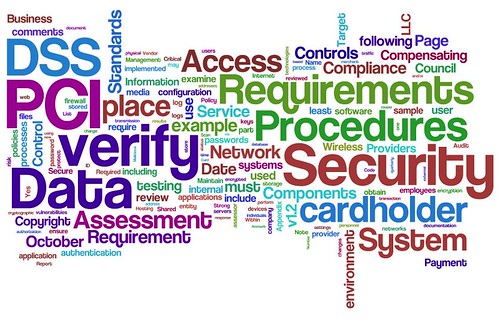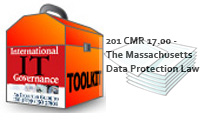Open networks are heterogeneous environment where users like to use all the applications and systems at any given time. In a heterogeneous environment, each department run different hardware and software, but you can control the protocols which will work on this environment.
Universities are famous for open network. Most Universities network is comprised of a Bank (To give loan to students), a restaurant, and a bookstore which have credit card processing ability. Students, alumni, researchers, employee and staff need access to utilize resources. Now how would you control access if same person assume all the roles mentioned above. Universities are basically transient communities, where users come back and plug-in their new devices and expect an immediate access to all the resources. Where the reputation of openness is challenge at every step of the way, now the question is how can they maintain reputation and yet control the environment based on security policies.
Reasonable security can be accomplished by focusing on a process rather than adding yet another security control. The process is based on risk assessment program where you assess your critical assets based on threat and vulnerability pair and measure the likelihood and impact of a threat if a given vulnerability is exploited.
The process start with knowing your assets – Network registration will detect when you plug-in your new equipment. Before you get an access, it detects a hardware address and username. You can also control common misconfigurations and noncompliance issues with network registration process. Some vulnerability management systems discover assets and perform vulnerability and security configuration assessment to proactively identify and prioritize risks. New vulnerabilities are accessed from trusted site on a regular basis and when vulnerabilities are identified, the management system needs to have an ability to remediate to comply with the information security policy.
Most of the departments in an open network contains different systems and applications and basically have different security appetite. Distributed IT Governance can address this issue where you develop policies and procedures which fit their needs and hand it over to the department to comply.
Open network requires pretty much open borders, Instead of securing the network/system emphasis should be on data protection.
[TABLE=9]
Recent news from AT&T to make its network open where customers can use any handset of their choice, perhaps a reaction to in response to recent moves from Verizon and Google to promote open network. Specifically Verizon announced that it would allow “any device” and “any application” to operate on its network. These open networks does provide flexibility for customers but at the same time burden lies on the shoulders of the corporations to provide right balance of security and privacy with availability of the network.
In an open network, reasonable security can be achieved by embracing ISO 27k standard and eventually acquiring ISO 27001 (ISMS) certification. Information Security Management System (ISMS) can be a great value added process to manage ongoing monitoring, maintaining and for process improvement of an open network. ISMS as a process in-place provides reasonable security safeguard to your information and certainly help to minimize the liability in the court of law.
End-to-End Network Security: Defense-in-Depth by Omar Santos
httpv://www.youtube.com/watch?v=zTJSMjYd9c4
(Free Two-Day Shipping from Amazon Prime). Great books
Tags: AT&T, Computers, Credit card, data protection, heterogeneous, impact, Information Security, Information Security Management System, isms, iso 27001, ISO 27k, ISO/IEC 27001, IT Governance, likelihood, Network registration, Omar Santos, Reasonable security, risk assessment program, security controls, threat, Universities network, Verizon, vulnerability, vulnerability management systems


















![Reblog this post [with Zemanta]](https://img.zemanta.com/reblog_e.png?x-id=a3168449-b81f-45c3-8b23-5ed61d6b8845)
 Usually security breach occurs due to lack of basic security controls or lack of effective control which is not relevant over the time. Security controls also disintegrate over the time due to lack of maintenance and monitoring.
Usually security breach occurs due to lack of basic security controls or lack of effective control which is not relevant over the time. Security controls also disintegrate over the time due to lack of maintenance and monitoring.![Reblog this post [with Zemanta]](https://img.zemanta.com/reblog_e.png?x-id=4734aa88-27e0-45d9-a802-a6d2377faf3b)
 The goal is to address the organization security needs as a whole, and assess how different departments and business functions are addressing the current business security requirements. The CMMI has five levels and evaluate security controls based on levels, not on specific objectives. Each level provides the basis for the next level where it is not possible to get to the next level without complying with previous level.
The goal is to address the organization security needs as a whole, and assess how different departments and business functions are addressing the current business security requirements. The CMMI has five levels and evaluate security controls based on levels, not on specific objectives. Each level provides the basis for the next level where it is not possible to get to the next level without complying with previous level. 


![Reblog this post [with Zemanta]](https://img.zemanta.com/reblog_e.png?x-id=2b18960c-caaa-4f56-a227-a5ede7b55594)

![Reblog this post [with Zemanta]](https://img.zemanta.com/reblog_e.png?x-id=2590b94c-4c68-4b01-a367-028d2bdde031)
![Reblog this post [with Zemanta]](https://img.zemanta.com/reblog_e.png?x-id=6d5c8feb-499c-434e-b44b-a01d6b2567e4)



